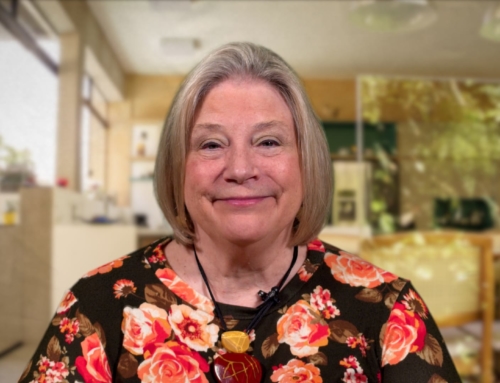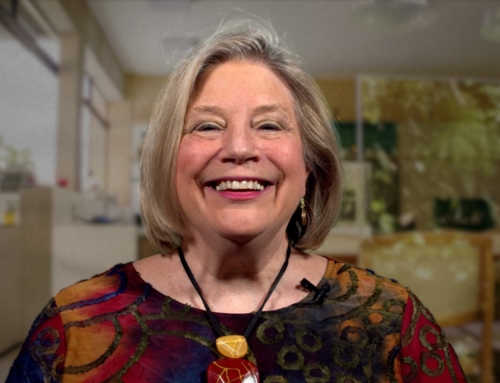Webinar Transcript Edited with Expanded Content
Diane Poole Heller, Ph.D. & Maggie Phillips, Ph.D. November 16, 2011
There’s a lot of hopefulness about Attachment Repair – even though there can be a lot of things that go wrong in early attachment. The research that is being done recently strongly indicates that repair toward Secure Attachment is possible – especially if we can work in the body awareness pre-verbally, nonconceptually, sub-psychologically. We have to access it on that level because it happens before the mind is even in place, before we can have conscious memory or any concepts in place about it. It’s very much a reflex state once it’s structured into the brain, and we most often don’t even know the reflex is there.
The biggest thing that Stan Tatkin emphasizes in his PACT training, and affects us all, is that most people in their adult relationships have no idea, in many ways, why they’re doing what they’re doing because it doesn’t even come up as a considered decision. It comes up as more of an instinctive “relational reflex”. This is crucial for a person to understand, in their primary relationship in particular, because those “significant other” dyads pull on our original dyadic attachment history with Mom the most. We take things personally – related to how our partner responds – that have nothing to do with us, and in reality, have much more to do with their early caregiver experience. Also we give ourselves a hard time for the reactions we have – and feel we have no control over – because these responses push up from the unconscious leaving us “bewildered and betwixt” about our behavior – especially behaviors we had hoped to change.
So much of our own behavior and so much of our partner’s behavior will just shift into these automatic pre-patterned structures or projections. And then for us as clinicians, how do we tap into that?
So we’re bringing a strong focus on bottom-up processing. (working through body sensation toward emotion and then integrating cognitive processing.) One of my Scandinavian students called it “bottoms-up” processing. Not exactly the same thing… Naturally, I had to explain to them the difference between the two!
And then of course we use top down processing towards the end of a session where we’re trying to help integrate the “lived wound or corrective experience” experienced in the session with understanding and perception. We need to know what these both feel like – the wound and its resolution – and how they affect behavior, as well as what people can do as practical exercises to promote more secure experiences. These Corrective Experience exercises can effectively help their recovery process if they didn’t start out with the “hit the jackpot” kind of luck of having a securely attached Mom.
The Mother tends to be the whole environment that the child internalizes and these imprints shifts into the actual brain structure. In terms of what attachment or bonding styles predict for adult relationship, certainly Secure Attachment predicts – “Secure Attachment” meaning that there’s a safe enough, positive holding environment, which engenders in most of us a sort of unflappable, optimistic expectation and basic trust related to our relationships and the world at large. “Basic Trust” is bigger than “Conditioned Trust” which is learned from repeated experience such as, “I’ve been around you so long, I know that you will do this, you will do that, you will be late or on time, you will respond to certain needs and not to others” …which is a historical conditional trust, but Basic Trust implies an unconditional kind of trust that “things will work out, things will eventually be okay, even if I am, or we are, going through a hard time.” There’s more of an optimistic view that comes from having your brain structured with Secure Attachment in terms of how others – and how you – see the world. You’re looking through a structure or relational template that sees the world as mostly kind, mostly loving, mostly trust-worthy, predominantly safe. Even if things go wrong, with Basic Trust in childhood, you will expect that there’s a reasonable quick repair or recovery and that you’re able to regulate with the Mother in terms of the nervous system, and the child’s nervous system is actually learning how to co-regulate with another human being. Since our human nervous systems are highly social, building that early capacity of interactively regulating is a great advantage we can later take into our adult partner relationships. Secure Attachment allows us to relax in relationship and – as Dan Siegel points out – there is an easy, relaxed flow between our need or experience of connection and/or aloneness. Certainly, in Secure Attachment, there’s emphasis on safety, protection, presence, safe and affectionate touch, kind gaze-to-gaze eye contact, prosody in the voice… and playfulness, by the way, is a really important part of what builds or restores Secure Attachment.
So the upshot is in our adult relationships, we want to make sure we’re not getting too task-oriented in our hard work-focused culture. It is essential to reserve lots of time out for PLAY. Vacation or some form of playfulness enriches us personally, strengthens our immune system toward better health, deepens our connection to our partner and builds the bridge back to Secure Attachment if either one or both of us had Insecure Attachment as a child.
Really what we want to be walking away with today is how do we excavate these attachment wounds if everything didn’t go well, and at the same time, nourish the Secure Attachment potential in the person because – even way back to John Bowlby – there was the perspective that our primary attachment system was biologically hard-wired towards Secure Attachment. It’s like it’s there, in potential, perhaps, and we have sometimes to work a bit to… sometimes we work very hard actually, to get what’s been blocking it, or interfering with it. How can we help to support that plasticity in the brain to shift from a secondary attachment style, which would be a switch away from Secure to adapt to the deficit of the caregiver back to more of our original Secure Attachment “blueprint”, or our original inherent biological design. So today’s talk partly is how do we do a lot of this work somatically and in a sub-psychological way through bottom-up processing.
As therapists, most of us have been trained to do more top-down cognitive work, with an added emotional emphasis. Then also, how do we nourish a Secure Attachment system and focus, but not over-focus, on wound tracking? We need both, we really need both.
One Comment
Comments are closed.







I’m filled with gratitude for all the input I’ve gotten. Thanks for being so generous in sharing such helpful information. I’m not a therapist, but have had my life turned from very negative to very optimistic by good therapy You have added to my optimism with all your online help.Wishing you health and happiness. Very gratefully, Norma Sillver